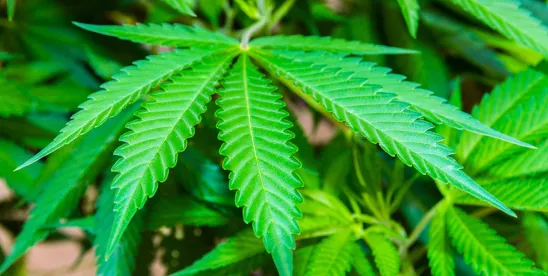As Congress considers the future of the American hemp industry in debates over the next Farm Bill, I’m reminded of these wise words that apply to almost any circumstance where you find yourself vulnerable and similarly situated to a similarly vulnerable person: “You don’t have to run faster than the bear to get away. You just have to run faster than the guy next to you.”
Almost since the ink dried on the 2018 Farm Bill, the industrial hemp industry has found itself in the unique position of stridently distancing itself from the marijuana industry and trying to find a balance between how to support other hemp products (in particular, consumable and often intoxicating products) in order to grow the popularity of the hemp plant in general to create a rising tide effect, while making sure that policymakers do not lump together both sides of the hemp industry in the event there is a movement to pull back on the hemp industry.
To be clear, when I refer to “industrial hemp” in this post, I am referring to non-consumable hemp such as hemp used to make clothing, fuel, plastic substitutes, etc. The distinction is important for framing the scope of the debate but also because previous Farm Bills have used the term “industrial hemp” as a catchall for all hemp.
State and Federal Legislative Activity on the Rise
Make no mistake about it — the consumable hemp industry is in the crosshairs of federal and state lawmakers. The first half of 2025 saw an onslaught of efforts in statehouses across the country to reform the hemp industry by limiting access and access points. Many of these proposals were sensible and many were overkill, and the results of the efforts were mixed, but what was clear in each instance was that the focus of legislators was on consumable hemp products and not industrial hemp.
We’re now seeing the same debates play out in the halls of Congress as lawmakers debate the next Farm Bill. And just as the target of reform in the statehouses was consumable hemp, the same is true in the House and Senate. The stakes, however, are higher in Congress because federal action could moot virtually all state laws.
Is This Trend a Positive Development for Industrial Hemp?
I’m not entirely certain, and it could be both good news and bad news. Starting with the bad news, it is conceivable that the entire capital market for hemp will dry up if access to consumable hemp products is sufficiently limited. Consumable hemp products are the darling of the cannabis world at this time, and people may take their money out of hemp if those products are legislated out of the market.
It could, however, be good news if investors are interested in staying in the hemp space and shift their resources to developing industrial hemp products. That would provide the much-needed capital (oxygen) to see how far industrial hemp really can go.
The Status Quo and Its Desirability
A final option at the federal level, and in many states, is to maintain the status quo. This option would likely not come to fruition due to an affirmative desire of lawmakers to keep things as they are; rather, due to a failure for a legislative body to achieve consensus on the appropriate reform measures.
At first blush, this may seem like a good thing for consumable hemp product manufacturers and retailers, and it is certainly better for them than an outright ban on consumable hemp products. But most of the sophisticated consumable hemp operators I talk to crave some form of regulatory structure because it would go a long way towards legitimizing that market. Without a regulatory regime in place, these operators have been operating in a sort of gray area where they have basically been forced to take the position that their products are “not illegal” instead of touting their legality and the rules in place to safeguard consumers. This has greatly limited the number and types of retail outlets (for example, most large grocery chains) willing to sell consumable hemp products. A robust regulatory regime would be a shot in the arm to consumable operators by making more shelf space available across the country.
And as for industrial hemp operators, they would be in the position described in the section above – good news, bad news, and too soon to tell.
Conclusion
I’ll close with a point I’ve made before but believe so strongly that I mention it whenever I can. When it comes to consumable hemp and even to marijuana, the potential markets are limited to those seeking to purchase consumable hemp or marijuana (with the understanding that there is certainly plenty of room for both markets to grow significantly). With industrial hemp, on the other hand, the market is practically limitless. Most people don’t care what their car door or plastic bottle is made of, as long as it works. If the industrial hemp business can provide those services in a cost-effective way, the sky is the limit, and the value of that industry will be many multiples of the consumable hemp market. We’re not close to that happening yet, but if you’re in the industrial hemp space and you’re reading the political tea leaves, you have to be at least a little bit intrigued.




 />i
/>i

